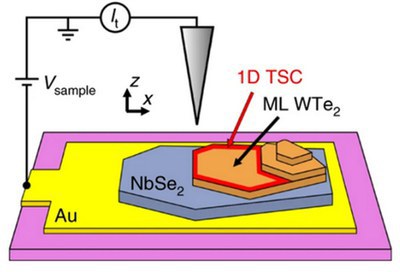Proximity Effects
By exploiting proximity effects between materials with different properties, van der Waals (vdW) heterostructures allow the systematic engineering of quantum states. In our research, we study the local strength of proximity effects as a function of, e.g., material thickness, temperature, and magnetic field in a scanning probe setting.
The possibility to isolate individual materials into thin two-dimensional sheets and combine them with other layered materials with vastly different electronic properties in a Lego-like fashion allows the realisation of physical properties which are otherwise unattainable. The physics that allows the engineering of properties in heterostructures is based on proximity effects which stem from an overlap of the wave functions between neighbouring layers. At the same time, the properties of the individual layers remain mostly intact due to the relative weak coupling between the vdW layers. We identify novel materials [1] to include into heterostructures and characterise the resulting proximity effects as function of parameters such as material thicknesses, interlayer distance, temperature and magnetic field [2].
Our work on proximity effects is supported by the DFG Priority Programme 2244.

